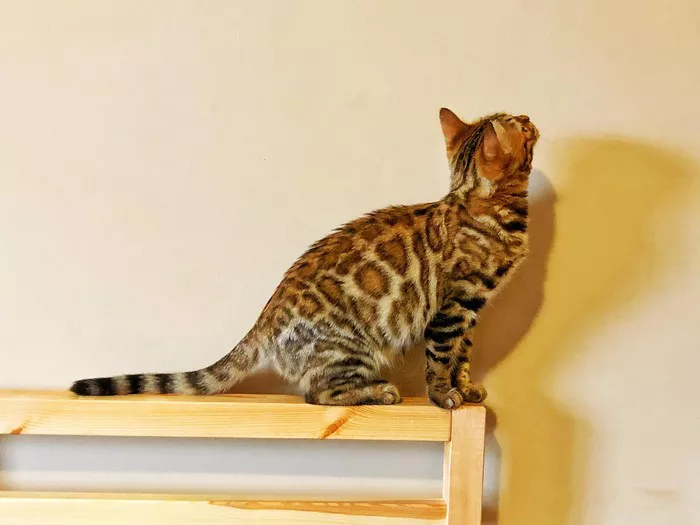For cat owners, the decision to let their feline friends venture outdoors can be a source of contemplation. When it comes to Bengal cats, a breed known for its energetic nature and wild ancestry, the question becomes even more pertinent. In this article, we will explore the considerations involved in deciding whether to allow your Bengal cat to roam outside or to keep them as an indoor-only pet. We will assess the potential benefits and risks associated with outdoor access, while also providing guidance on how to ensure the well-being and safety of your furry companion.
Understanding Bengal Cats
Bengal cats are a domesticated breed that traces its heritage back to the Asian leopard cat. Known for their strikingly beautiful coat patterns reminiscent of their wild ancestors, Bengal cats possess a high level of energy, curiosity, and intelligence. These characteristics make them particularly adept at exploring their surroundings and seeking mental stimulation.
Benefits of Outdoor Access
Proponents of allowing Bengal cats outside argue that it provides numerous benefits for their well-being. Here are some potential advantages:
1. Exercise and Stimulation: Bengal cats thrive on physical activity and mental stimulation. Outdoor access allows them to engage in natural behaviors such as climbing, running, and hunting. The opportunity to explore new environments and encounter different sights, sounds, and smells can enrich their lives significantly.
2. Reduced Boredom and Anxiety: Indoor-only cats may experience boredom and anxiety due to a lack of environmental stimulation. Allowing Bengal cats outside can provide an outlet for their excess energy, potentially reducing destructive behavior and promoting better overall mental health.
3. Social Interaction: Outdoor exploration presents opportunities for Bengal cats to interact with other animals and humans, satisfying their social needs. This can contribute to their overall happiness and well-being.
Risks and Concerns
While outdoor access may offer benefits, it is crucial to consider potential risks and concerns before making a decision:
1. Safety Hazards: Outdoor environments pose various threats to cats, including traffic accidents, encounters with aggressive animals, exposure to diseases, and the risk of getting lost or stolen. Bengal cats, with their adventurous nature, may be more susceptible to these dangers.
2. Health Risks: Outdoor cats are at a higher risk of contracting infectious diseases, parasites, and injuries from fights or accidents. They may also be exposed to toxic substances such as plants, chemicals, or contaminated food. Regular veterinary care, vaccinations, and preventive treatments are essential to mitigate these risks.
3. Environmental Impact: Allowing cats outside can have an impact on the local ecosystem. Cats may prey on wildlife, disturb bird populations, or contribute to environmental pollution through defecation. Responsible cat ownership involves considering and minimizing these potential ecological consequences.
Indoor-Only Alternatives
If you decide that outdoor access is too risky for your Bengal cat, there are ways to provide them with a stimulating and fulfilling indoor environment:
1. Enrichment Activities: Engage your Bengal cat’s natural instincts by providing interactive toys, puzzle feeders, scratching posts, and climbing structures. Rotate toys regularly to prevent boredom and create opportunities for mental stimulation.
2. Play and Bonding Time: Spend quality time playing with your cat each day using toys that simulate hunting behaviors. This not only provides exercise but also strengthens the bond between you and your feline companion.
3. Vertical Spaces: Bengals love to climb and observe their surroundings from high vantage points. Install shelves, perches, or cat trees near windows to give them a sense of elevation and opportunities for bird-watching.
4. Indoor Safe Access: Consider creating a secure outdoor enclosure or “catio” where your Bengal cat can experience fresh air and sunlight while remaining protected from hazards. These enclosures can be customized to provide climbing structures, hiding spots, and even access to grass or plants.
Conclusion
The decision of whether to let your Bengal cat outside is a complex one that requires careful consideration. While outdoor access can provide physical and mental stimulation, it also comes with potential risks to their safety and health. Ultimately, the well-being of your Bengal cat should be the top priority, and you must weigh the benefits against the risks. If you choose to keep your Bengal cat indoors, ensure you provide them with a stimulating environment that meets their natural instincts. Remember, responsible cat ownership involves providing love, care, and appropriate enrichment regardless of whether they venture outdoors or not.



























